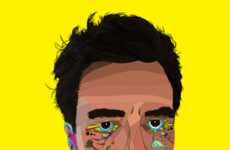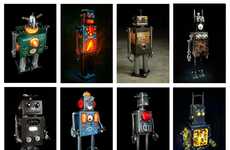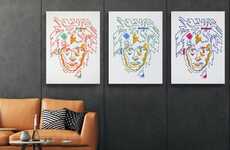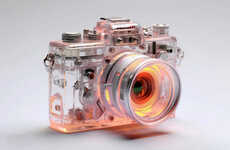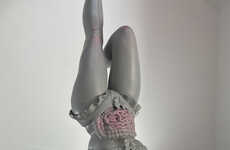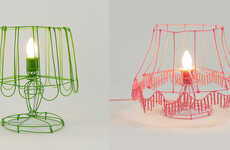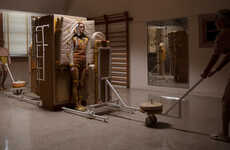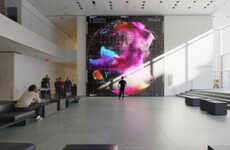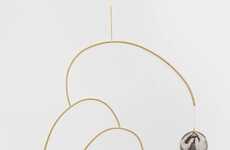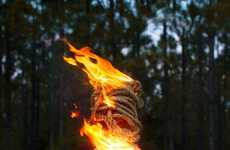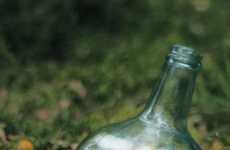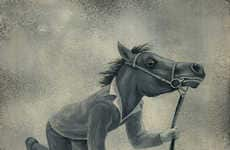
The Tania Blanco 'Sleep-Drunk Vademecum' Collection is Unnerving
Sophia Pelka — March 12, 2012 — Art & Design
References: taniablanco & english.mashkulture.net
The Tania Blanco 'Sleep-Drunk Vademecum' collection is a curation of surrealist compositional works. Each work creates an uneasiness in the viewer, dwelling on exaggerated proportions and juxtaposed compilations of objects. The series has an evident motif of technology and human sciences. Several works focus on high precision robots, realistic anatomical models and human representation. The scene is constantly within both past and present. The ambiguity of both the subject and narrative become forcefully intrusive to the audience's logical mind.
Tania Blanco is a Spanish artist based in both Paris and Valencia. She earned her PhD at the Polytechnic University of Valencia. Her curiosity with the bizarre relationship between humans and robots is frequently explored through her work.
The Tania Blanco 'Sleep-Drunk Vademecum' is a petri dish of artistic skill and curious concepts.
Tania Blanco is a Spanish artist based in both Paris and Valencia. She earned her PhD at the Polytechnic University of Valencia. Her curiosity with the bizarre relationship between humans and robots is frequently explored through her work.
The Tania Blanco 'Sleep-Drunk Vademecum' is a petri dish of artistic skill and curious concepts.
Trend Themes
1. Surrealist Compositional Works - Exploring exaggerated proportions and juxtaposed compilations of objects in art creates opportunities for disruptive innovation in creating novel visual experiences.
2. Technology and Human Sciences - The motif of technology and human sciences in art provides a platform to disrupt traditional thinking and challenge societal norms.
3. Bizarre Relationship Between Humans and Robots - Examining the peculiar connection between humans and robots in art opens up possibilities for disruptive innovation in robotics, artificial intelligence, and human-computer interaction.
Industry Implications
1. Art - Artists can disrupt traditional artistic boundaries by incorporating surrealist compositional techniques and exploring the relationship between humans and technology.
2. Technology - The fusion of technology and human sciences in art presents opportunities for disruptive innovations in robotics, AI, and human-computer interaction.
3. Education - Education institutions can use surrealist art to challenge students' perspectives on technology and human relationships, fostering critical thinking and out-of-the-box problem-solving skills.
2.5
Score
Popularity
Activity
Freshness

